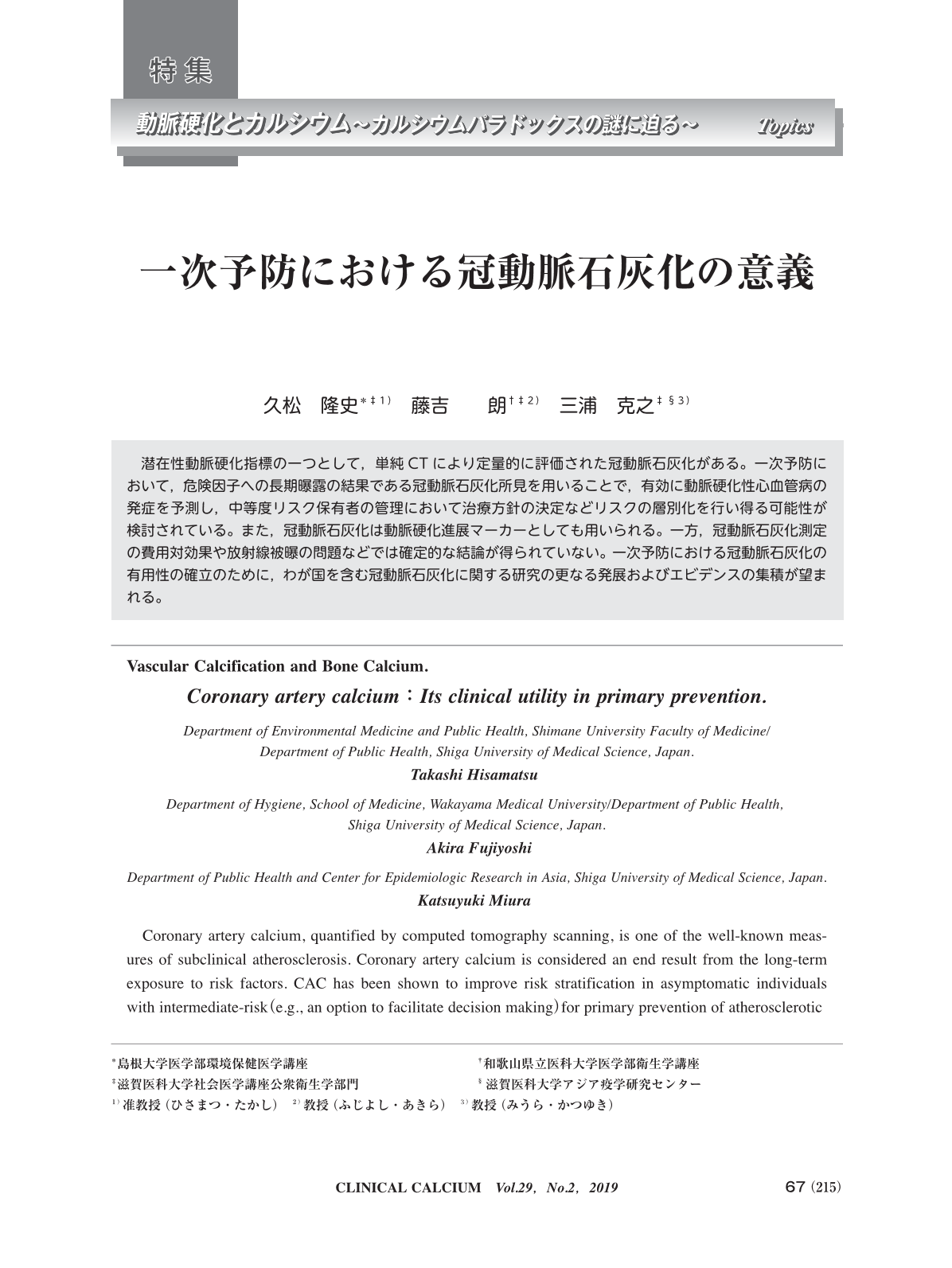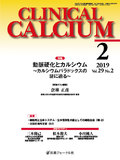Japanese
English
- 有料閲覧
- Abstract 文献概要
- 1ページ目 Look Inside
- 参考文献 Reference
潜在性動脈硬化指標の一つとして,単純CTにより定量的に評価された冠動脈石灰化がある。一次予防において,危険因子への長期曝露の結果である冠動脈石灰化所見を用いることで,有効に動脈硬化性心血管病の発症を予測し,中等度リスク保有者の管理において治療方針の決定などリスクの層別化を行い得る可能性が検討されている。また,冠動脈石灰化は動脈硬化進展マーカーとしても用いられる。一方,冠動脈石灰化測定の費用対効果や放射線被曝の問題などでは確定的な結論が得られていない。一次予防における冠動脈石灰化の有用性の確立のために,わが国を含む冠動脈石灰化に関する研究の更なる発展およびエビデンスの集積が望まれる。
Coronary artery calcium, quantified by computed tomography scanning, is one of the well-known measures of subclinical atherosclerosis. Coronary artery calcium is considered an end result from the long-term exposure to risk factors. CAC has been shown to improve risk stratification in asymptomatic individuals with intermediate-risk(e.g., an option to facilitate decision making)for primary prevention of atherosclerotic cardiovascular disease in the US/western countries. Coronary artery calcium also represents a surrogate of atherosclerosis burden. However, the lack of evidence regarding issues such as costs or radiation exposure related to measuring coronary artery calcium warrants further studies.



